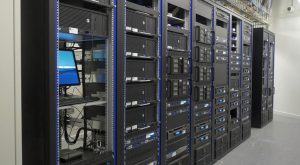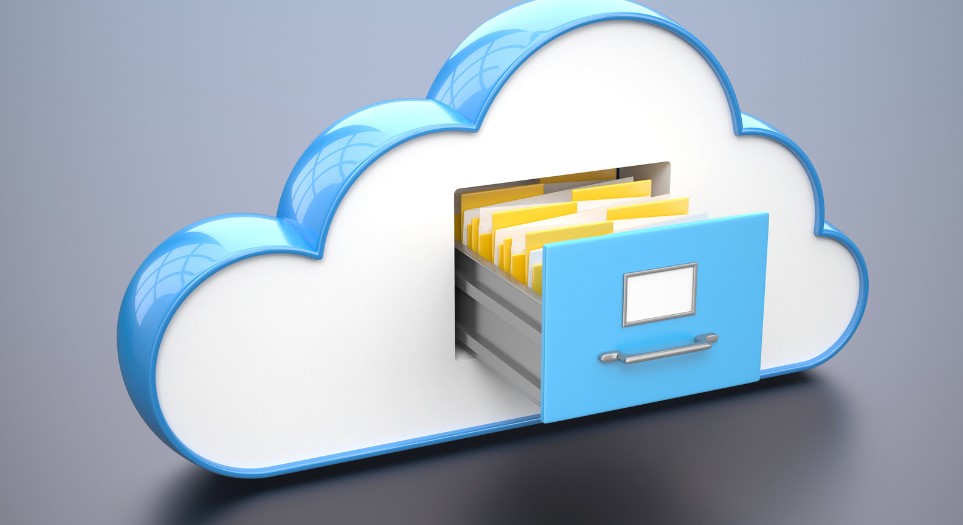In the world of web development, understanding how to work with localhost is a fundamental skill. Whether you’re setting up a new website, testing an application, or troubleshooting network issues, you’ll often come across 127.0.0.1:62893. But what exactly does this combination of numbers signify, and why is it so important?
This blog aims to demystify 127.0.0.1:62893, explaining its role in local development environments and offering practical advice on how to resolve common errors associated with it.
What Is 127.0.0.1:62893 and How Is It Used?

The loopback address is generally understood to be 127.0.0.1 IP address. This means that when your computer uses 127.0.0.1, it is effectively communicating with itself. The loopback address is a special-purpose IP address that enables the network software on a computer to communicate with itself as though it were communicating over a network.
The addition of :62893 designates a specific port on the local machine. A port in networking is a virtual point where network connections start and end. In the context of 127.0.0.1:62893, 62893 is the port number that a particular service or application listens to for incoming traffic on the localhost.
Example Use Case: Imagine you’re developing a web application. Instead of deploying it immediately to a live server, you first run it locally on your machine. By accessing http://127.0.0.1:62893, you can view and interact with the application as if it were live on the web, but in a safe, controlled environment where you can test changes without affecting real users.
What Is the IP Address 127.0.0.1 Used For?
127.0.0.1 is part of a reserved block of IP addresses known as loopback addresses, which range from 127.0.0.0 to 127.255.255.255. The most commonly used loopback address is 127.0.0.1, which refers to the local computer.
In practice, 127.0.0.1 is used for several purposes:
- Testing Network Applications: Developers use 127.0.0.1 to test web servers, database connections, and other network-based applications on their local machines without requiring an external network.
- Localhost as a Hostname: The term “localhost” is often used interchangeably with 127.0.0.1. When you type localhost in your browser’s address bar, it is resolved to 127.0.0.1.
- Troubleshooting: Network administrators use 127.0.0.1 to troubleshoot and test network configurations, ensuring that software behaves correctly on the local machine before deploying it.
RealTime Example: If you’re running a web server like Apache or Nginx on your local machine, you might access it using http://127.0.0.1 or http://localhost. Any websites or services hosted on this server would only be accessible to you, unless configured otherwise.
How Can You Access 127.0.0.1:62893 from a Browser?

Accessing 127.0.0.1:62893 from your browser is straightforward, but it requires that the service or application you’re trying to reach be actively running on your machine.
Here’s how to do it:
- Start the Service: Ensure the service (e.g., a web server, database server, or custom application) is running on your local machine and is configured to listen on port 62893.
- Open Your Browser: Use any modern web browser such as Chrome, Firefox, or Edge.
- Enter the Address: In the address bar, type http://127.0.0.1:62893 and press Enter.
- View the Service: If everything is set up correctly, you should see the service’s interface or response. Depending on the service running on port 62893, this could be a website, an API response, or any other output.
Troubleshooting Tip: If you receive an error like “Connection Refused” or “This site can’t be reached,” ensure that:
- The service is actually running.
- There are no firewall rules blocking access to port 62893.
- The service is configured to listen on the correct port and interface (localhost/127.0.0.1).
What Are Localhost Ports and Why Are They Important?
Ports are critical components in networking, acting as communication endpoints for applications. Each port number represents a specific process or service, enabling multiple services to operate on a single IP address without conflict.
Understanding Port Numbers:
- Common Ports: Some ports have predefined functions, such as 80 for HTTP traffic and 443 for HTTPS traffic.
- Custom Ports: Ports like 62893 are often assigned to specific applications or services. Developers choose these to avoid conflicts with other standard services.
Why Ports Matter:
- Service Isolation: By using different ports, you can run multiple services on the same IP address. For example, you might have a web server on port 80 and a database on port 3306.
- Security Considerations: Some ports are more vulnerable to attacks than others. It’s essential to manage and monitor the ports that are open on your system.
Example in Action: If you’re developing a web application, you might run it on port 62893 while your database runs on port 3306. This separation ensures that both services can operate simultaneously without interference.
What Are the Common Errors with 127.0.0.1:62893 and How Can You Fix Them?

Working with 127.0.0.1:62893 isn’t always smooth sailing. Here are some common errors you might encounter and how to resolve them:
Connection Refused
- Cause: The service is not running, or a firewall is blocking the connection.
- Solution: Start the service and check your firewall settings to ensure that traffic on port 62893 is allowed.
Page Not Found (404 Error)
- Cause: The service is running, but the specific resource you’re trying to access doesn’t exist.
- Solution: Verify the URL and ensure the resource (like a webpage or API endpoint) is correctly deployed on the server.
Access Denied
- Cause: Permissions are not set correctly, or the server is configured to restrict access.
- Solution: Adjust the permissions of the files or directories in question or modify the server configuration to allow access.
Advanced Troubleshooting
- Log Files: Always check the service’s log files for detailed error messages that can give you more insight into what’s going wrong.
- Port Conflicts: Ensure no other service is trying to use port 62893. You can check this using command-line tools like netstat or lsof on Unix-based systems.
How Do Firewalls and Security Settings Affect Localhost Connections?
Firewalls are designed to protect your computer by controlling incoming and outgoing network traffic based on predetermined security rules. However, these rules can sometimes interfere with localhost connections, especially on non-standard ports like 62893.
Firewall Considerations
- Inbound and Outbound Rules: Most firewalls block unsolicited inbound traffic by default. If your service on 127.0.0.1:62893 isn’t working, you might need to create an inbound rule that allows traffic on this port.
- Application-Specific Rules: Some firewalls have application-specific rules. Ensure that your service or application has permission to use port 62893.
Configuring Firewall Settings
- Windows Firewall: Go to Control Panel > System and Security > Windows Firewall > Advanced Settings, then create a new inbound rule for port 62893.
- Linux IPTables: Use iptables commands to allow traffic on port 62893.
- MacOS: Use the built-in firewall settings or third-party software like Little Snitch to manage port access.
Security Best Practices
- Limit Access: Ensure that only trusted applications can use ports like 62893.
- Monitor Traffic: Regularly check the traffic on your localhost ports to detect any unusual activity that could indicate a security issue.
Why Is Port Management Important for Local Development?

Port management is crucial because it prevents conflicts, enhances security, and ensures that your local development environment runs smoothly.
Key Aspects of Port Management:
- Avoiding Conflicts: If two services attempt to use the same port, one will fail to start. Proper port management ensures each service has a unique port.
- Security: Unnecessary open ports can be potential security risks. Managing ports helps reduce your attack surface.
- Efficiency: By using designated ports for specific services, you can optimize your workflow and avoid downtime.
Practical Example: If you run multiple web applications on your local machine, assigning each a unique port (e.g., 62893 for one and 3000 for another) ensures they don’t interfere with each other. You can access them simultaneously via different ports in your browser, like http://127.0.0.1:62893 for one application and http://127.0.0.1:3000 for another.
What Are the Best Practices for Setting Up a Localhost Environment with 127.0.0.1:62893?
Setting up a localhost environment correctly can save you significant time and trouble in the long run. Here are some best practices to ensure that your localhost setup is efficient, secure, and effective:
- Use Reliable Server Software: Choose a well-known and reliable server software such as Apache, Nginx, or a lightweight local server like XAMPP or WAMP for running applications on your local machine. These tools often provide built-in support for common ports and make configuration straightforward.
- Assign Clear Port Numbers: When setting up different services, use clear and consistent port numbers. For example, assign 62893 for your web server, 5432 for your database server, and 3000 for your Node.js development server. This makes managing and remembering port assignments easier.
- Document Your Configurations: Keep a document or log of your port configurations and services running on each port. This is especially useful if you’re working with a team or switching between multiple projects.
- Regularly Update Your Software: Ensure all your software, including your local server, development tools, and operating system, are up-to-date. Updates often include patches for security vulnerabilities that could affect your localhost environment.
- Test Your Setup Frequently: Regularly test your localhost setup to ensure everything is running smoothly. Use tools like curl or Postman to make requests to your local server and check the responses.
- Backup Your Configurations: Backup important configuration files regularly, such as server config files, databases, and any other critical data. This ensures that you can quickly restore your environment if something goes wrong.
- Secure Sensitive Information: Avoid storing sensitive information, such as passwords or API keys, in plain text on your localhost environment. Use environment variables or configuration management tools to keep sensitive data secure.
How Can You Secure Your Localhost Environment?

Even though a localhost environment is not exposed to the internet, it is still important to secure it to prevent unauthorized access and ensure a smooth development process.
- Use Strong Passwords and Authentication: Any services running on 127.0.0.1:62893 should require strong passwords or other forms of authentication to prevent unauthorized access. Use tools like bcrypt or Argon2 for password hashing.
- Enable HTTPS: Where possible, use HTTPS for local communications. Tools like mkcert can help you create self-signed certificates to secure communication even on your local environment.
- Limit Access to Localhost Only: Ensure that services running on 127.0.0.1:62893 are configured to listen only to localhost (127.0.0.1) and not to external IP addresses. This prevents any remote connections from accessing your local services.
- Regularly Monitor Logs: Keep an eye on the logs of your services to monitor for any unusual activity or potential security breaches. Regularly review and analyze log files for suspicious access attempts or errors that could indicate a problem.
- Use a Firewall: Even on localhost, use a firewall to control which applications can send and receive traffic. Only allow the necessary traffic to pass through and block any unwanted connections.
- Practice Good Hygiene with Development Tools: Regularly update and secure your development tools, such as text editors, IDEs, and version control systems. Make sure they don’t contain any vulnerabilities that could compromise your localhost environment.
Conclusion
Understanding and effectively managing 127.0.0.1:62893 is a vital skill for developers. This IP and port combination is key to creating a safe and effective local development environment where you can test and troubleshoot applications without affecting live servers. By following best practices for setup, security, and troubleshooting, you can make the most of your localhost environment and ensure a smooth development workflow.
FAQs
What is the purpose of using 127.0.0.1:62893 in development?
It is used to run and test applications locally, allowing developers to identify and fix issues before deploying to a live server.
How do I know if my firewall is blocking 127.0.0.1?
Check your firewall settings for rules that block incoming or outgoing traffic on port 62893. Ensure there are exceptions for the necessary applications.
Is it possible to switch the port number from 62893 to a different one?
Yes, you can change the port number in your application’s configuration files, but make sure the new port is not in use by another service.
What are the security risks of using 127.0.0.1:62893?
If improperly configured, services on 127.0.0.1:62893 could be exposed to local threats or unintended access. Proper firewall rules and security measures can mitigate these risks.
Why does my browser say “connection refused” when accessing 127.0.0.1:62893?
This usually happens because the service is not running, a firewall blocks the port, or the service is configured incorrectly.
How do I reset my localhost settings?
Restart your server software and review the configuration files to ensure they are set up correctly. Sometimes, simply restarting your computer can resolve network configuration issues.
Can you access 127.0.0.1:62893 remotely?
No, 127.0.0.1 is a loopback address, and it is only accessible from the local machine. It is not intended for remote access.
Is 127.0.0.1 a private IP address?
Yes, 127.0.0.1 is part of the reserved loopback range and is not routable on external networks. It is considered a private address for local machine use only.
What is the 127.0.0.1 browser?
This term generally refers to using a web browser to access services or applications running locally on the 127.0.0.1 loopback address.
Can 127.0.0.1 be spoofed?
While technically possible, spoofing 127.0.0.1 is usually pointless, as it is a loopback address designed for local use and is not accessible externally.
Why is 127.0.0.1 unable to connect?
Possible reasons include service misconfiguration, the application not running, or firewall restrictions. Verify that the service is correctly set up and running.




